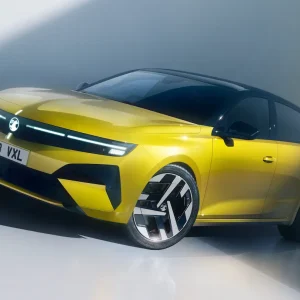As announced in the 2020 Budget in March, benefit in kind (BIK) rates are changing today, with relatively small changes for cars already registered, and a switch to WLTP-based CO2 figures for cars registered from today.
All newly-registered cars now get a BIK rate based on their CO2 emissions measured on the new WLTP cycle, rather than the old NEDC cycle. WLTP is more accurate and usually yields a higher CO2 figure, thus cancelling out the two-percentage point reduction most bands get.
Cars already registered continue to be taxed on their NEDC CO2 figure, although some bands have shifted one or two percentage points up or down.
Until April 2021, cars with zero CO2 emissions – most likely pure-electric cars, though the handful of hydrogen cars on the market would qualify too – incur no company car tax at all. After that, they go to a still very favourable 1%.
Rates are also known until 2025, giving some much-needed stability to the fleet market. Caroline Sandall, co-chair of the Association of Fleet Professionals, said: “The hugely welcome, but surprising, freeze in company car BIK tax rates for 2023-24 and 2024-25 at 2022-23 levels could provide a significant boost in demand for what remains one of the nation’s favourite employee benefits.
“Businesses and drivers have also been opting out of company cars because tax rates were not known for the full duration of the operating cycle. We have continually called on the government to recognise that fleets now operate company cars over typically four and five years.”
The current tables are reproduced below.
Cars registered after 6 April 2020
|
CO2 emissions |
Electric range |
2020-21 (%) |
2021-22 (%) |
2022-25 (%) |
|
0 |
|
0 |
1 |
2 |
|
1-50 |
>130 |
0 |
1 |
2 |
|
1-50 |
70-129 |
3 |
4 |
5 |
|
1-50 |
40-69 |
6 |
7 |
8 |
|
1-50 |
30-39 |
10 |
11 |
12 |
|
1-50 |
<30 |
12 |
13 |
14 |
|
51-54 |
|
13 |
14 |
15 |
|
55-59 |
|
14 |
15 |
16 |
|
60-64 |
|
15 |
16 |
17 |
|
65-69 |
|
16 |
17 |
18 |
|
70-74 |
|
17 |
18 |
19 |
|
75-79 |
|
18 |
19 |
20 |
|
80-84 |
|
19 |
20 |
21 |
|
85-89 |
|
20 |
21 |
22 |
|
90-94 |
|
21 |
22 |
23 |
|
95-99 |
|
22 |
23 |
24 |
|
100-104 |
|
23 |
24 |
25 |
|
105-109 |
|
24 |
25 |
26 |
|
110-114 |
|
25 |
26 |
27 |
|
115-119 |
|
26 |
27 |
28 |
|
120-124 |
|
27 |
28 |
29 |
|
125-129 |
|
28 |
29 |
30 |
|
130-134 |
|
29 |
30 |
31 |
|
135-139 |
|
30 |
31 |
32 |
|
140-144 |
|
31 |
32 |
33 |
|
145-149 |
|
32 |
33 |
34 |
|
150-154 |
|
33 |
34 |
35 |
|
155-159 |
|
34 |
35 |
36 |
|
160-164 |
|
35 |
36 |
37 |
|
165-169 |
|
36 |
37 |
37 |
|
170+ |
|
37 |
37 |
37 |
Cars registered before 6 April 2020
|
CO2 emissions |
Electric range |
2020-21 (%) |
2021-22 (%) |
2022-25 (%) |
|
0 |
|
0 |
1 |
2 |
|
1-50 |
>130 |
2 |
2 |
2 |
|
1-50 |
70-129 |
5 |
5 |
5 |
|
1-50 |
40-69 |
8 |
8 |
8 |
|
1-50 |
30-39 |
12 |
12 |
12 |
|
1-50 |
<30 |
14 |
14 |
14 |
|
51-54 |
|
15 |
15 |
15 |
|
55-59 |
|
16 |
16 |
16 |
|
60-64 |
|
17 |
17 |
17 |
|
65-69 |
|
18 |
18 |
18 |
|
70-74 |
|
19 |
19 |
19 |
|
75-79 |
|
20 |
20 |
20 |
|
80-84 |
|
21 |
21 |
21 |
|
85-89 |
|
22 |
22 |
22 |
|
90-94 |
|
23 |
23 |
23 |
|
95-99 |
|
24 |
24 |
24 |
|
100-104 |
|
25 |
25 |
25 |
|
105-109 |
|
26 |
26 |
26 |
|
110-114 |
|
27 |
27 |
27 |
|
115-119 |
|
28 |
28 |
28 |
|
120-124 |
|
29 |
29 |
29 |
|
125-129 |
|
30 |
30 |
30 |
|
130-134 |
|
31 |
31 |
31 |
|
135-139 |
|
32 |
32 |
32 |
|
140-144 |
|
33 |
33 |
33 |
|
145-149 |
|
34 |
34 |
34 |
|
150-154 |
|
35 |
35 |
35 |
|
155-159 |
|
36 |
36 |
36 |
|
160+ |
|
37 |
37 |
37 |





